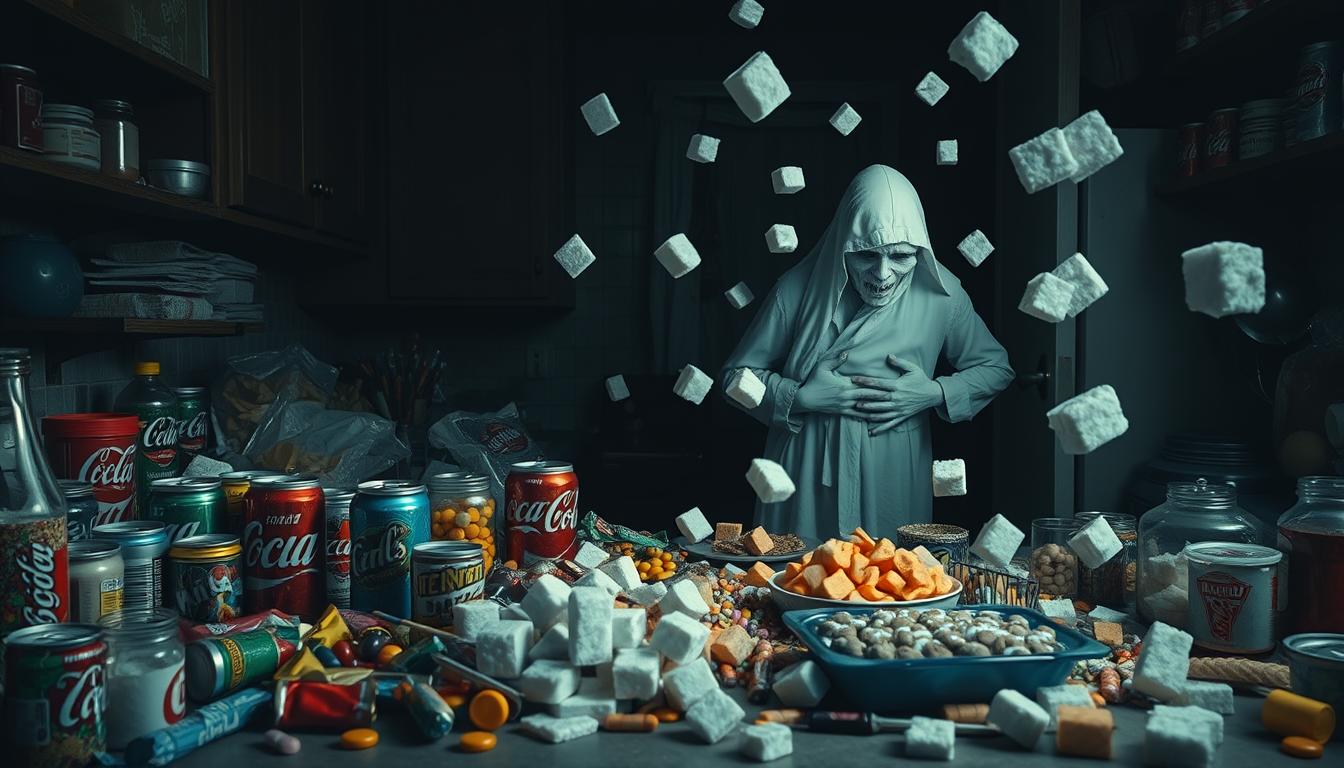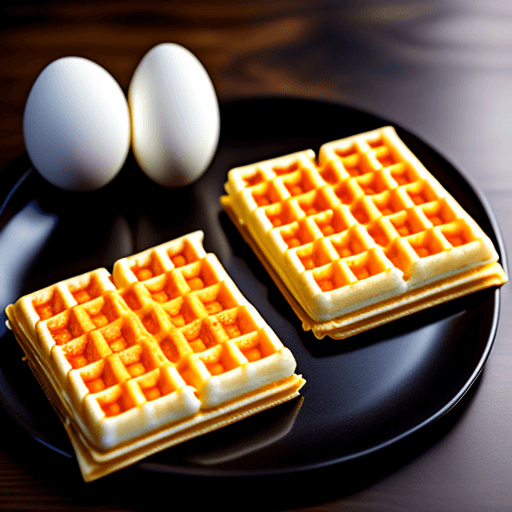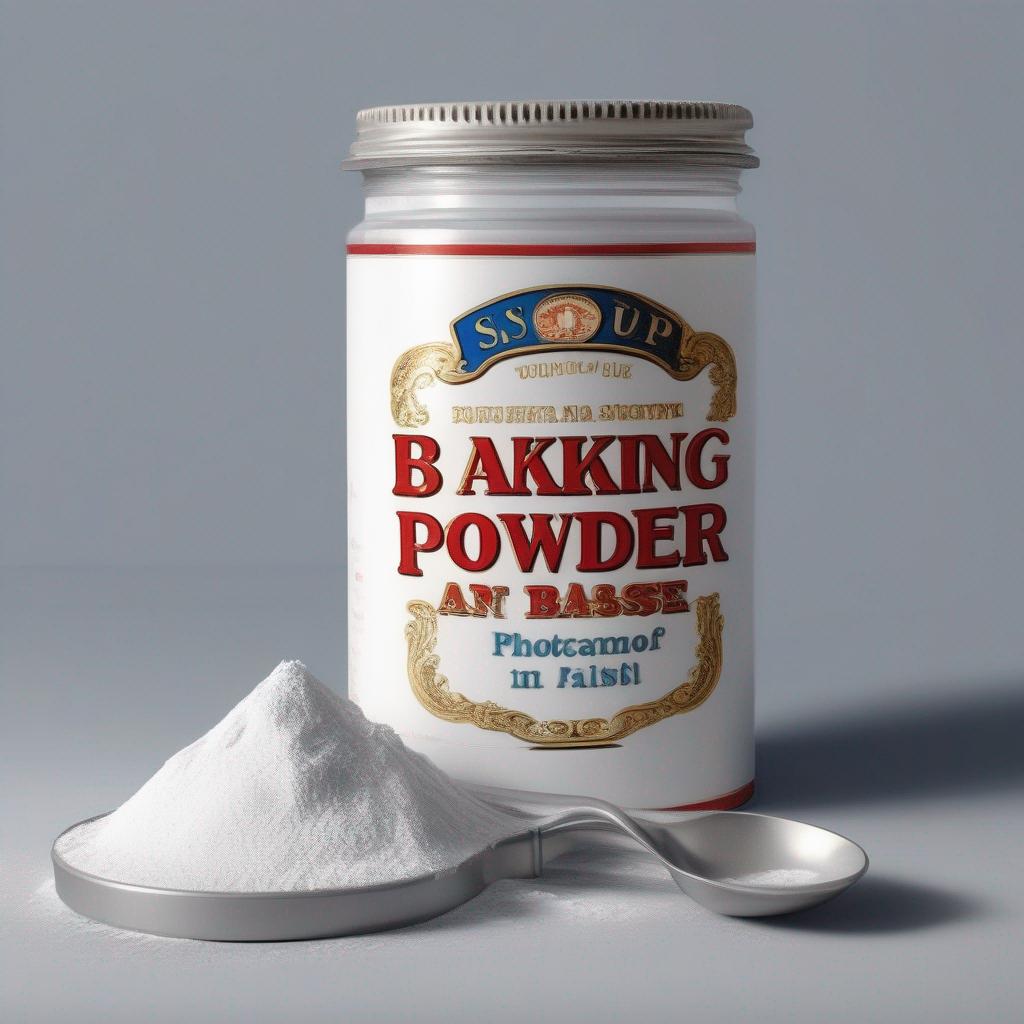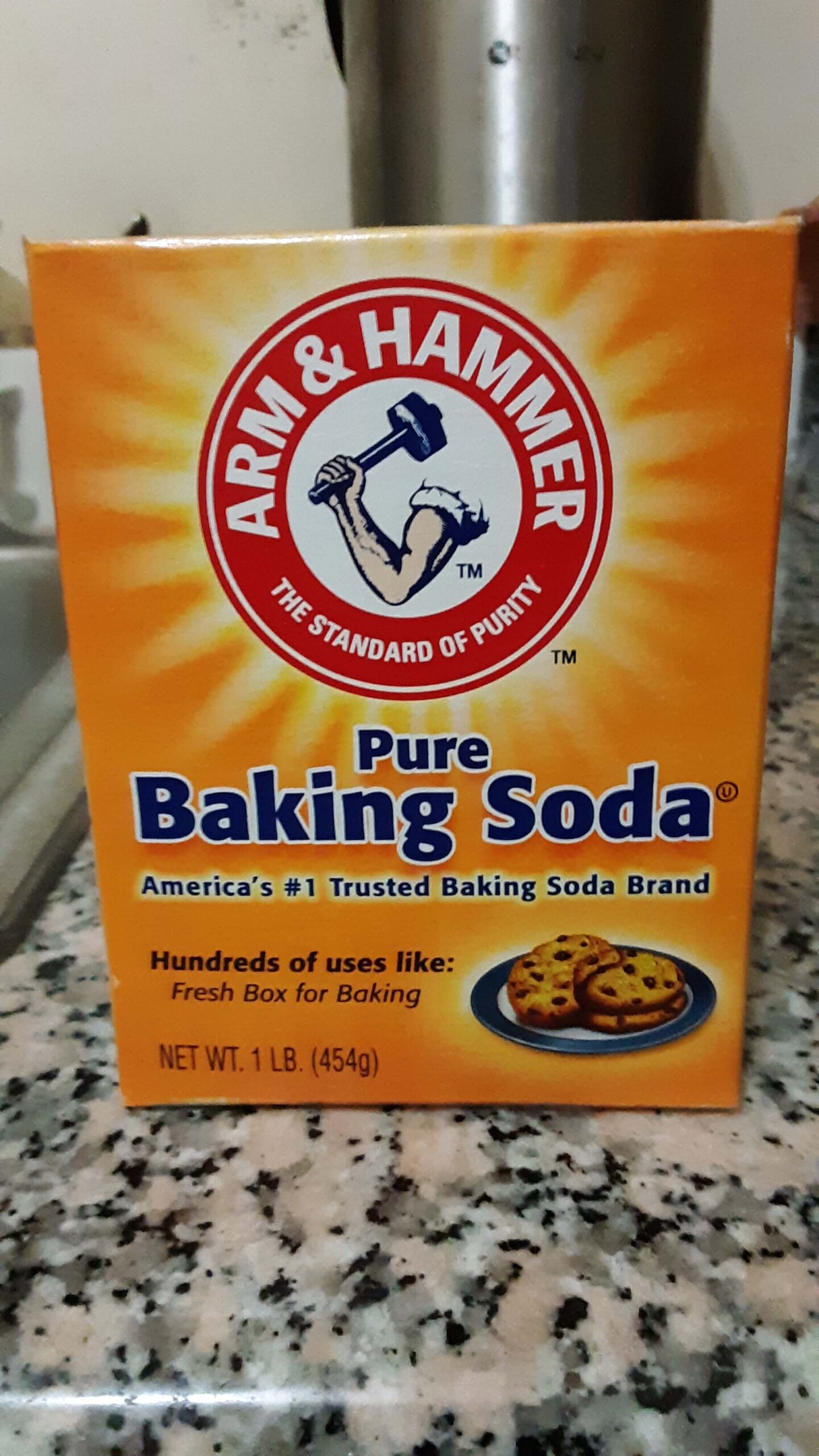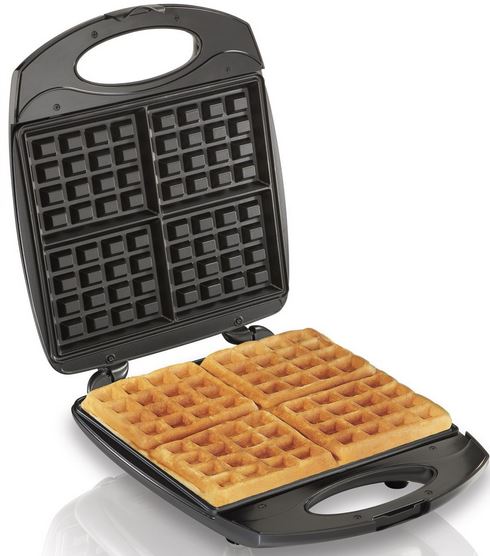This article will examine the science behind what sugar does to waffle batter, including how it contributes to caramelization and crispiness.
We will look at the importance of heat in creating perfect waffles and share tips for achieving consistent results every time you cook up a batch.
Key Takeaways
- Sugar affects texture, crispiness, moisture, viscosity, and browning in waffle batter.
- Proper heat management and sugar content are crucial for caramelization and desired texture.
- Sugar slows gluten development for thinner batter and crispy waffles, while less sugar creates thicker batter for fluffier waffles.
- Mix-ins and toppings should be balanced with the sugar amount for optimal flavor.
Table of Contents
- 1 The Role of Sugar in Waffle Batter
- 2 Caramelization and Crispiness
- 3 The Maillard Reaction
- 4 The Importance of Heat
- 5 How Sugar Affects Texture
- 6 Creating a Golden-Brown Color
- 7 The Science of Baking Powder
- 8 Balancing Sweetness and Flavor
- 9 Adding Other Ingredients to Waffle Batter
- 10 Understanding Batter Consistency
- 11 The Impact of Cooking Time and Temperature
- 12 Tips for Perfect Waffles Every Time
- 13 looking at Variations on Classic Waffle Recipes
- 14 Frequently Asked Questions
The Role of Sugar in Waffle Batter
You might think sugar is just for sweetness, but in waffle batter it also plays a crucial role in browning and creating a crispy exterior. The Maillard reaction is a chemical reaction in which sugar reacts with amino acids from the flour and eggs in the batter to form a complex set of delicious flavors.
Sugar also contributes to the structure of the batter by providing moisture and increasing its viscosity. Balancing sweetness with other ingredients like salt and acid is important to achieving a delicious waffle. Too much sugar can lead to burning and toughness, while too little can result in a bland flavor profile.
However, those who want to avoid using traditional granulated sugar have options such as substitutes like honey or maple syrup, or adjusting recipe ratios to use less sugar overall. It’s important to consider health implications when incorporating sugar into waffle batter. While moderation is important, there are alternatives available such as using natural sweeteners or reducing overall added sugars in one’s diet.
So understanding how sugar impacts both flavor and structure can lead to better waffles that satisfy both taste buds and health goals.
Caramelization and Crispiness
Ironically, adding a certain ingredient to the mix creates that satisfying crunch on the outside of the waffle. This ingredient is sugar. When added to waffle batter, sugar undergoes browning reactions that lead to flavor development and texture changes.
Caramelization is one of the processes that occur when sugar is heated in the presence of amino acids and water. As heat is applied, sugars break down into smaller molecules that react with amino acids to produce brown pigments and flavor compounds.
Proper heating ensures that caramelization occurs at just the right temperature, resulting in an evenly browned surface while maintaining a soft and fluffy interior. The amount of sugar content used also affects how quickly it will caramelize – too much may cause burning or over-browning while too little may result in a lackluster crust.
Understanding these basic principles can help you achieve perfectly crisp yet fluffy waffles every time!
The Maillard Reaction
Adding heat to the mixture causes a chemical reaction that transforms the batter into golden-brown waffles with a mouth-watering aroma. This is known as the Maillard reaction, where amino acids and reducing sugars in the batter combine and create new flavor compounds.
The browning process not only enhances the visual appeal of waffles but also develops complex flavors that make them irresistible.
High temperatures can cause excessive browning and result in burnt waffles, while low temperatures may lead to undercooked waffles with little flavor development. Also ingredient ratios can impact the Maillard reaction; for instance, adding more sugar or protein-rich ingredients can increase browning and flavor complexity.
By understanding how the Maillard chemical reaction works and implementing appropriate cooking techniques and ingredient ratios, it’s possible to achieve deliciously crispy golden brown waffles with rich complex flavors that leave your taste buds craving for more!
The Importance of Heat
It’s important to make sure that heat is distributed evenly throughout the batter so that every part cooks at the same rate. This can be achieved by using a high-quality waffle iron with an even heating source. A good way to test if your waffle iron distributes heat evenly is by pouring water over its surface and looking for hot spots.
The heat source also plays an important role in achieving perfectly cooked waffles. Electric-powered waffle irons are popular because they allow for precise temperature control. However, stovetop irons are also great options since you can use the burners on your stovetop to control the amount of heat you want to use.
How Sugar Affects Texture
The amount of sugar you use in your recipe directly impacts your waffle’s moisture content, tenderness, viscosity, crystallization, and browning reaction.
Sugar is hygroscopic, which means it attracts moisture from its surroundings. When added to waffle batter, sugar increases the overall moisture content and helps to retain it during cooking. This results in a moister and more tender waffle. However, too much sugar can make your waffles overly moist and lead to a gummy or rubbery texture.
The amount of sugar also affects the viscosity or thickness of waffle batter. Sugar slows down gluten development by interfering with protein binding. This leads to a thinner batter that will spread more easily on the griddle or iron resulting in flatter and crispier waffles. On the other hand, less sugar creates thicker batter which leads to smaller but fluffier waffles with less spread during cooking.
Also as sugar crystals dissolve in heat they undergo caramelization reactions contributing towards browning coloration making them visually appealing as well as delicious to taste!
Creating a Golden-Brown Color
To achieve a perfectly golden-brown color on your waffles, you’ll want to make sure that your cooking surface is preheated and greased just right. Achieving uniformity in heat distribution across the surface of the waffle iron is important to getting an even color on both sides of the batter. Temperature control is also important as too high heat can cause burning while too low heat can result in pale, undercooked waffles.
One way to ensure even heat distribution is by using a cast-iron waffle maker which retains and distributes heat evenly. Also flipping techniques play a critical role in achieving an even color. Flipping the batter halfway through cooking time ensures that both sides cook evenly and get that perfect golden-brown shade.
Batter hydration plays a crucial role in creating a perfect color for your waffles. A well-hydrated batter will spread more evenly across the cooking surface and allow for optimal browning. Conversely, if the batter is too thick or dry, it may not spread properly causing uneven browning or sticking to the surface of the iron. By following these tips for achieving uniformity in heating, temperature control, flipping techniques, and proper batter hydration you’ll be able to prepare beautiful golden-brown waffles every time!
The Science of Baking Powder
Baking powder is a leavening agent that causes chemical reactions in the batter, leading to the formation of carbon dioxide. This gas gets trapped within the batter’s structure, causing it to expand and rise.
However, using too much or too little baking powder can affect the final output. To achieve optimal results, it’s essential to maintain a pH balance between the acidic and alkaline ingredients in your batter. An excessively acidic mixture can cause the baking powder to react prematurely, leading to less rise during cooking. On the other hand, an overly alkaline solution will not provide enough acidity for adequate reaction with the leavening agent.
When working with baking powder as a leavening agent for your waffles or pancakes, measuring techniques play a vital role in determining their fluffiness. It is crucial to use standardized measuring spoons instead of guessing amounts by sight or pinch. Also you should always sift together all dry ingredients before incorporating them into wet ones.
While baking powder remains one of the most popular options for providing lift in waffle mixes, there are some alternatives worth considering. For instance, whipped egg whites can be folded into the batter right before cooking to offer similar results without any added chemicals.
Balancing Sweetness and Flavor
Balancing the sweetness and flavor of your waffles is essential to create a satisfying breakfast experience.
When it comes to sweetness balance, it’s important to consider the other ingredients in your waffle batter.
If you opt for a sweet topping like maple syrup or whipped cream, reducing the amount of sugar in your batter can balance out the sweetness and prevent an overly sugary taste. Also decreasing sugar in your recipe can also lead to a healthier breakfast option with fewer calories.
On the other hand, if you’re pairing your waffles with savory toppings like bacon or eggs, you may want to increase the sugar slightly for a more balanced flavor profile.
Taste testing is crucial when determining the right amount of sugar for your waffle recipe. It’s important to pay attention not only to sweetness but also to texture and overall sensory perception.
Adding Other Ingredients to Waffle Batter
As you mix in your favorite ingredients like fresh berries or chocolate chips into the waffle batter, watch as they become little pockets of surprise and delight when you take that first bite. Mix ins galore are a great way to add depth and complexity to your waffles.
The science behind this is simple – adding new ingredients changes the chemical composition of the batter, creating new flavors and textures.
Savory possibilities abound with mix ins as well. Try adding cooked bacon or sausage for a breakfast twist on the traditional sweet waffle. Sweet and salty combinations are also popular – consider adding salted caramel or peanut butter chips to satisfy both cravings at once.
Fruit pairings can create a refreshing and healthy option, with options like blueberries, strawberries, or even sliced bananas.
The creative combinations of mix ins are endless, limited only by your imagination (and perhaps pantry supplies). Don’t be afraid to experiment with unexpected additions like chopped herbs or spices for an extra kick of flavor.
Understanding Batter Consistency
Get the perfect texture for your waffles by ensuring that the consistency of your batter is smooth and free from lumps. Achieving the ideal batter consistency is crucial in getting delicious and fluffy waffles. Here are some key factors to consider when aiming for the right batter consistency:
-
Ingredient ratios: The ratio of ingredients used in making waffle batter impacts its final texture. Too much flour can result in a dense and heavy texture, while too much liquid can make it runny and thin.
-
Mixing techniques: Proper mixing techniques ensure that all ingredients are well-incorporated, resulting in a homogenous mixture with an even texture.
-
Resting time: Letting your batter rest allows gluten strands to relax and absorb moisture properly, resulting in a light and tender waffle.
-
Batter temperature: Maintaining consistent batter temperature ensures even cooking and prevents overcooking or undercooking.
- Flour types: Choosing the right flour type affects both flavor and texture, so it’s essential to choose one that complements your recipe best.
Obtaining optimal consistency requires careful consideration of these factors during preparation.
The Impact of Cooking Time and Temperature
The browning process occurs due to the chemical reactions that take place when sugar interacts with heat.
The heat distribution is another factor that influences the quality of waffles. It is crucial to ensure that heat is distributed evenly across the batter for consistent results. When cooking at high temperatures, there is a risk of burning or overcooking the waffles, resulting in a tough texture and unpleasant taste.
To help you understand better, let’s take a look at this table which illustrates how different cooking times and temperatures can affect waffle consistency:
| Temperature | Time | Consistency |
|---|---|---|
| 325°F | 2 min | Light and fluffy |
| 350°F | 3 min | Crispy on outside, soft on inside |
| 375°F | 4 min | Golden brown with crispy exterior |
| 400°F | 5 min or more | Dark brown with crunchy texture |
Mastering cooking time and temperature is essential for producing perfect waffles every time. The right combination of these factors ensures that your waffles are light, fluffy, crispy on the outside while remaining soft on the inside. Understanding how sugar interacts with heat during baking will help you manipulate these factors effectively for optimal results.
Tips for Perfect Waffles Every Time
You want your waffles to be the shining star of breakfast, like a bright sun rising over a calm sea. To achieve this, try these tips for perfect waffles every time.
Firstly, mix-ins and toppings can take your waffle game to the next level. Whether it’s adding fresh berries or chocolate chips to the batter or topping with whipped cream and syrup, these additions not only enhance flavor but also provide texture. However, don’t overload the batter as it can affect cooking time and texture.
Secondly, allowing the batter to rest for at least 10 minutes before cooking is crucial for achieving fluffy waffles. The resting period allows the gluten in the flour to relax and absorb moisture from other ingredients resulting in tender waffles that are crispy on the outside.
Choosing the right flour is essential as it affects both texture and taste. Opt for all-purpose flour or pastry flour instead of cake or bread flour which contains too much protein that results in tough waffles. Also using a thermometer when cooking ensures that your waffles are cooked evenly without being undercooked or burnt.
Proper storage is also important; store leftover waffles in an airtight container in the fridge or freezer for later consumption.
looking at Variations on Classic Waffle Recipes
You can try adding fruit or spices, including blueberries, cinnamon, and pumpkin spice, to your batter for a sweet twist. If you’re feeling adventurous, try adding bacon bits or cheese to your batter for a savory option. For those with dietary restrictions, there are plenty of vegan and gluten-free recipes available that use alternative flours and dairy substitutes.
Unique toppings can also elevate your waffles to the next level. Try topping them with fresh fruit or whipped cream for a classic touch. For something more indulgent, drizzle chocolate sauce or caramel over your creation. Other creative ideas include peanut butter or maple syrup glazes and even fried chicken as an unconventional topping.
| Flavor Combinations | Savory Options | Vegan Alternatives |
|---|---|---|
| Blueberries + Lemon Zest | Bacon Bits + Cheddar Cheese | Almond Milk + Flaxseed Egg |
| Cinnamon + Applesauce | Sausage + Mushroom Gravy | Coconut Milk + Aquafaba |
| Pumpkin Spice + Cream Cheese | Spinach + Feta Cheese | Soy Milk + Tofu |
| Banana Nutella | Ham + Swiss Cheese | Oat Milk + Chia Seed Egg |
| Chocolate Chips + Peanut Butter | Fried Chicken Strips | Plant-Based Yogurt + Banana Mash |
| Gluten-Free Options | Unique Toppings |
|---|---|
| Almond Flour or Coconut Flour Batter | Fresh Berries or Fruit Compote |
| Buckwheat or Rice Flour Batter | Whipped Cream or Marshmallows |
| Quinoa Flakes or Cornmeal Batter | Chocolate Sauce or Caramel Drizzle |
| Chickpea Flour or Potato Starch Batter | Peanut Butter Glaze or Maple Syrup Drizzle |
| Oat Flour or Millet Flour Batter | Fried Chicken Strips, Bacon Bits, Diced Avocado, etc. |
Frequently Asked Questions
Can you substitute sugar with a healthier alternative in waffle batter?
As the saying goes, “you’re what you eat,”and when it comes to waffles, that means making conscious decisions about the ingredients we use. Fortunately, there are healthier alternatives to sugar that can be used in waffle batter without sacrificing flavor or texture.
When considering healthy alternatives, it’s important to take into account their glycemic index – a measure of how quickly they raise blood sugar levels. Options like honey and maple syrup have lower glycemic indexes than granulated sugar and can provide a unique flavor profile to your waffles. However, it’s important to note that using liquid sweeteners may require adjustments to the baking time and amount of liquid in the batter.
What is the ideal temperature for cooking waffles with sugar?
The ideal temperature for cooking waffles with sugar is between 375°F and 400°F. Cooking time should be around four minutes to achieve a golden brown color and a crispy texture.
Higher temperatures may result in burnt waffles, while lower temperatures will make them pale and soggy. Browning level also impacts the flavor profile of your waffle, as it creates caramelization reactions that enhance sweetness and aroma. Moreover, sugar acts as a tenderizer by breaking down gluten proteins in the batter, resulting in a softer texture.
However, excessive amounts of sugar can cause your waffles to become too sweet or sticky. Therefore, it’s important to balance the amount of sugar used with other ingredients in the recipe for optimal results.
How long can you store waffle batter with sugar in the fridge?
As a waffle enthusiast, I understand the importance of having fresh batter on hand at all times. However, when it comes to adding sugar to my batter, I’ve learned that there are certain precautions I need to take in order to maintain its quality and safety.
Generally speaking, waffle batter with added sugar can be stored in the fridge for up to three days before it begins to spoil due to bacterial growth. To ensure maximum shelf life and prevent any unwanted flavor changes, it’s important to store the batter in an airtight container and keep it at a consistent temperature below 40°F (4°C).
Quality control is also essential – if you notice any odd smells or off-colors, it’s best not to use the batter. By following these storage tips and paying close attention to your batter’s shelf life and quality control measures, you’ll be able to enjoy delicious homemade waffles whenever the craving strikes!
As they say: ‘waste not, want not.’ … and with proper storage and care, you can ensure that your waffle batter remains fresh and delicious for longer.
Does the amount of sugar in waffle batter affect its nutritional value?
The amount of sugar in waffle batter can certainly affect its nutritional value. However, it also has an impact on the texture, glycemic index, taste perception, baking time, and shelf life.
When there is more sugar in the batter, it will have a sweeter taste and a softer texture as sugar acts as a tenderizer. On the other hand, too much sugar can increase the glycemic index of waffles which can lead to a sudden spike in blood sugar levels after consumption. Moreover, excess sweetness may also mask other flavors present in the batter such as vanilla or cinnamon.
In terms of baking time, more sugar than required could cause over-browning before the inside is fully cooked while less sugar could lead to pale-colored waffles that don’t look appetizing. Also when we think about shelf-life and storage options for waffle batters with varying amounts of sugar; lower amounts tend to last longer due to reduced moisture content whereas higher amounts shorten the shelf life due to increased moisture retention properties.
